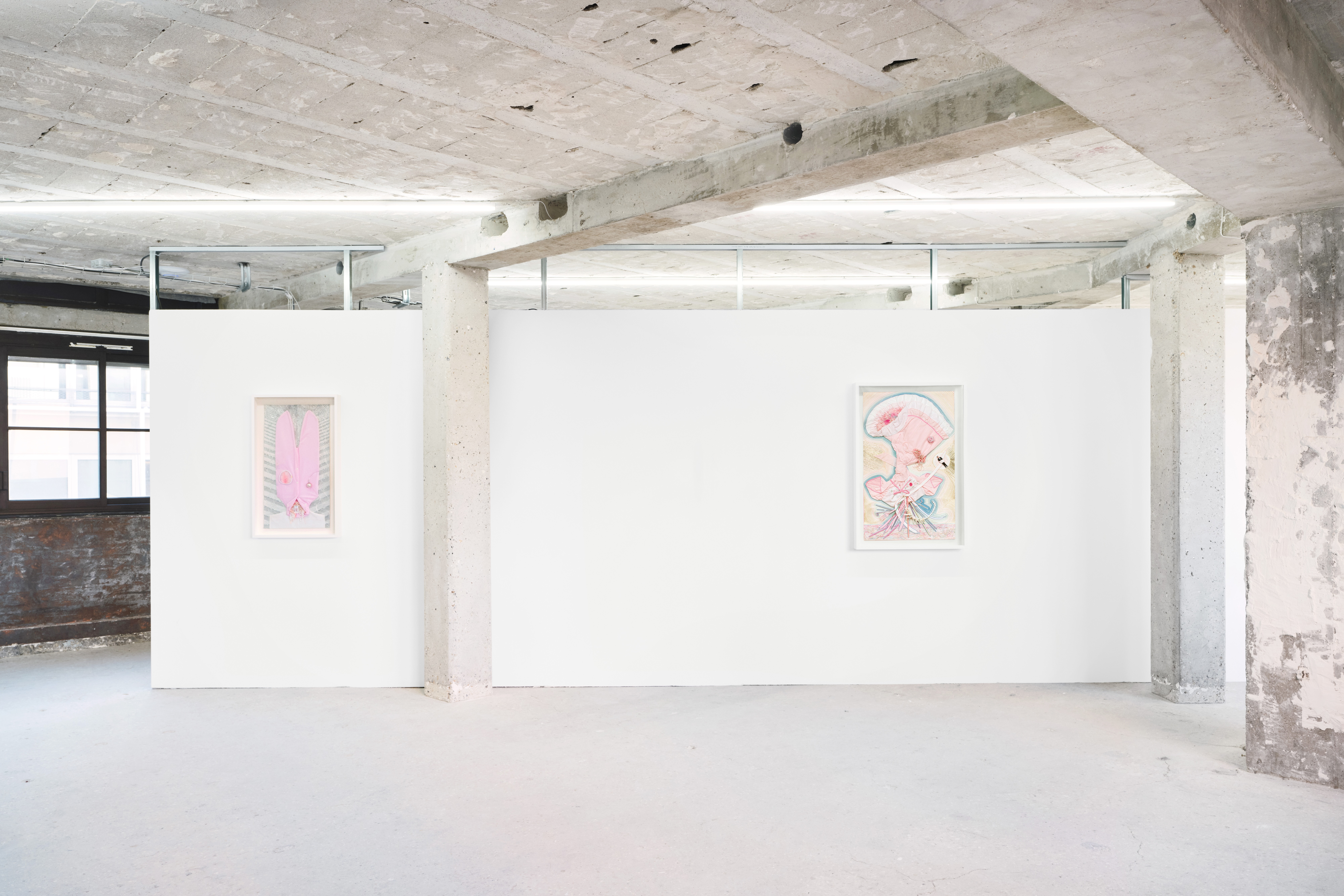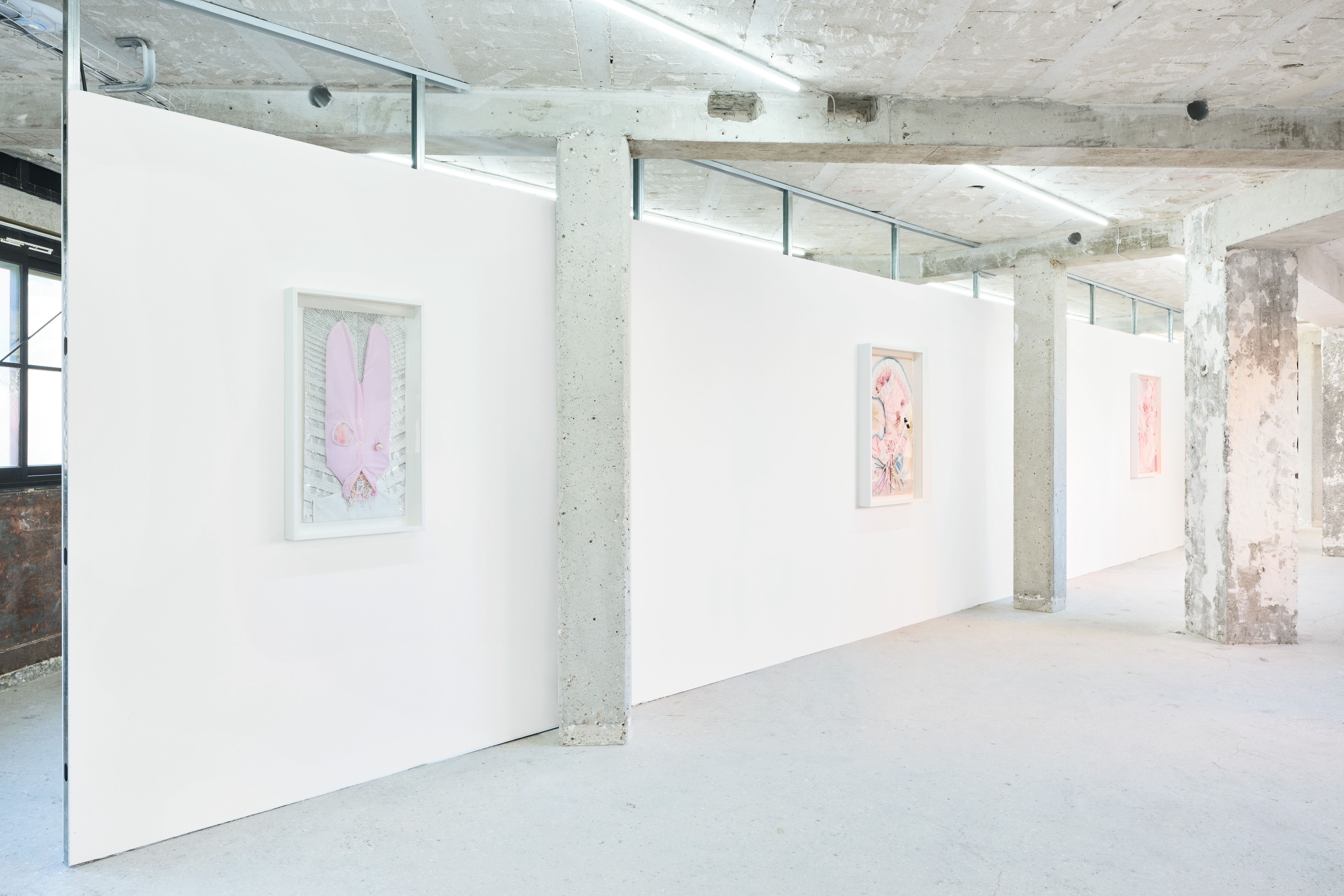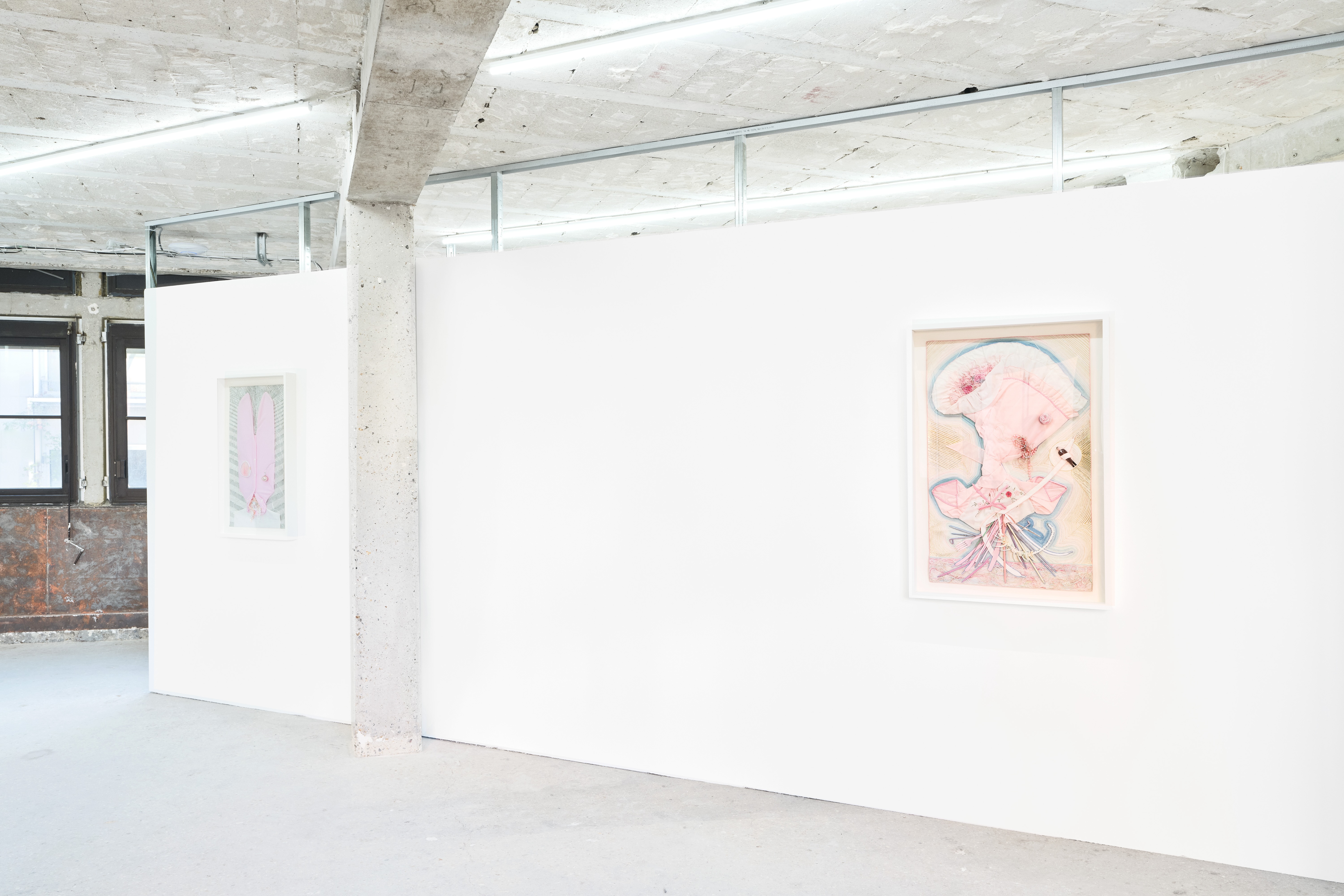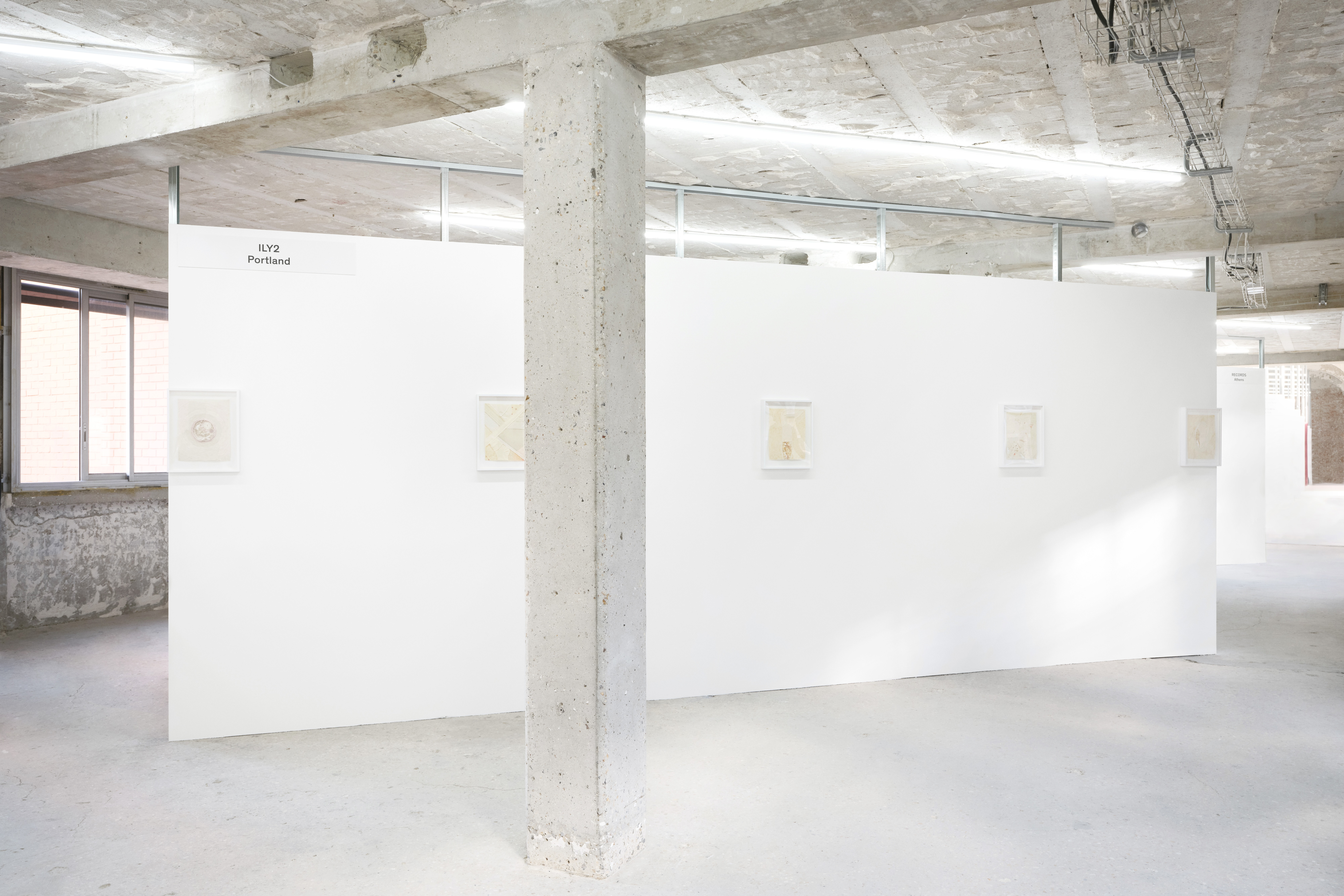ILY2 is pleased to announce its participation at Paris Internationale 2024, with a solo presentation by the New York-based artist Bonnie Lucas. Paris Internationale is a collegial initiative established in 2015, as an innovative alternative to traditional art fairs to support a new generation of galleries, taking place October 16 - 20, 2024 in Paris, France.
Throughout a career spanning over 40 years, Bonnie Lucas has steadfastly built an aesthetic of inquiry into “traditional” femininity, reconfiguring avalanches of consumer goods into totemic meditations on commodification, pathos, sensuality, and perversion. Chosen specifically for Paris Internationale, cited within the historic Central Bergère, ILY2 has zeroed in on a seven year period in Lucas’ oeuvre to present a selection of works created between 1978-79, and three works from the early 1980s. Exhibiting Lucas’ work in Paris is a special opportunity to amplify the work of a woman artist who has been active for decades but largely overlooked, and very much still emerging in the international art world.
Born in 1950, Lucas is deeply influenced by romanticized depictions of postwar domesticity and the concurrent rise of mass-produced products. ILY2’s Paris Internationale booth will showcase a series of hand -sewn and -beaded assemblages on fabric, made out of a trove of cheap dross (satin bows, costume jewelry, clothing, and toys) that Lucas has taken apart and meticulously reconfigured. Pink, a recurrent color in the exhibited works, escapes its presumed lack of substance with Lucas’ treatment of color as a source of emotional and historical resonance. From cotton candy hues and dissected precious objects emerge Frankenstein’s monsters of girly dreams and their profane transmutations.
Lucas adamantly regards her material as “information,” as artifacts for cultural and personal analysis. At first glance, wan yet garish palettes, synthetic textures, and cartoonish flourishes evoke innocence. But Lucas’s masterful hand mines the transgressive undercurrents coded into her material: feminized things of beauty, play, and comfort are exploded and contorted, giving way to an uncanny center where surface-level sweetness crosses into the perverse. The features that make baby dolls or plastic tiaras “cute” evidence the meeting between consumer capitalism and the gendered subjugation of a patriarchal society. For Lucas, these objects carry key aspects of social meaning. From birth, girls are subject to a highly suggestive, forever puerile performance of taste, mannerism, and appearance. Compositions allude to the eroticization of girlhood via an emphasis on corporeal shapes and a consistent gestural uncovering, a revealing of material strata; zippers bust open with torrents of toy parts and unspooled polyester threads. While limiting and incomplete, Lucas does not renounce these exaggerated aesthetics as insignificant or inherently bad. She is instead guided by an intellectual and artistic curiosity that extends outwards, embracing the contradictions held within proliferations of shiny plastic and threadbare silks.
The artist demonstrates her conceptual and formal interests in her assemblage works. Making prudent use of fabric, figurative elements appear in unusual scenes that are as exuberant as they are unsettling. 1985’s Lucky Lady depicts a monstrous feminine figure built out of a pink children’s dress, clasping a tiny plastic man in her shoelace tentacle. Lucas has cleverly inverted the misogynistic imperative for women and girls to shrink themselves to not appear grotesque or intimidating. Composed almost exclusively of the color that represents twee purity, the figure here embodies a King Kong role reversal—her, in a position of outsized power, him small and helpless in her grasp.
Elsewhere, an Untitled series of mixed media and collage works from the late 1970s are characterized by a delicate touch and showcase Lucas’ more sparse, muted leanings. Sinuous lines of white-toned thread meander through strewn pieces of cut fiber, ribbon snippets, pastel beads, and garment pieces, as if sewn directly onto a seamstress’ workbench. One such work collages fabric swaths in nursery-quiet shades of cream, beige, and light pink. Viewers recognize a sock and an elasticated bra band in the abstract arrangement, bisected by a scrap of linen. In another Untitled work, a scattering of tiny iridescent pearls fall across the stitched grounds near a piece of green ribbon with a red thread wrapped around it, reminiscent of a needle and thread. Other pearls remain inside their plastic bag, treasured and preserved. A preoccupation with the tactile gets to the core of Lucas’ aesthetic inquiry, treading the shaky ground upon which “traditional” femininity is situated. In one assessment, the series reflects the skill of a master tailor, with fastidious attention to technique and material. But perhaps more critically, the Untitled works also bridge the culturally-freighted objects that anchor a girl’s youth with the compositional dexterity of a mature artist. This revelation, as it appears in her work, is understated but profound, and leaves viewers with hazy impressions of their mother’s steady fingers hemming a dress, or attempting to mentally locate a long-forgotten baby blanket.
By suturing highly accessible, sentimental items into new forms, Lucas simultaneously critiques and celebrates the manufactured femininity that persists through time. She is comfortable with disagreement, at once honoring the tender memories nestled in the deepest recesses of our minds, and the critical distance required to examine them. For Lucas, artmaking has countered the immense pressure placed on women in the second half of the twentieth century to be sweet, desireless, and diligent mothers, wives, and workers. The acts of disfiguring and reconstructing assert a certain autonomy of the imagination, one that seeks to expand the boundaries of one’s world and self, rather than surrender to societal pressure. In this spirit, the exhibited works suggest a holistic view of identity and a sensibility that was radically ahead of its time. Neither earnest paeans to conventional girlhood nor total rejections of kitsch, Lucas’ thought-provoking work has perhaps never been more relevant to a contemporary audience.
Bonnie Lucas (b. 1950, Syracuse, NY) holds a BA in Art History from Wellesley College and an MFA from Rutgers University. Her work has been included in projects at the Drawing Center, New York; International Studio & Curatorial Program, Brooklyn; Sideshow Gallery Chicago; Painting Center, New York; Art in General, Brooklyn; deCordova Sculpture Park and Museum, Lincoln; TextielMuseum, Tilburg; and Bellevue Arts Museum, WA, among other institutions. In 2014, her work was the subject of a survey exhibition at the Sylvia Wald & Po Kim Art Gallery, New York. Following this extensive survey, Lucas has had recent solo exhibitions at JTT, New York; ILY2, Portland; RUSCHWOMAN, Chicago; and 17ESSEX, New York. Lucas’s work has been written about in Artforum, Brooklyn Rail, ARTnews, New York Times, The Village Voice, New Yorker, and USA Today. Lucas lives and works in New York City.



